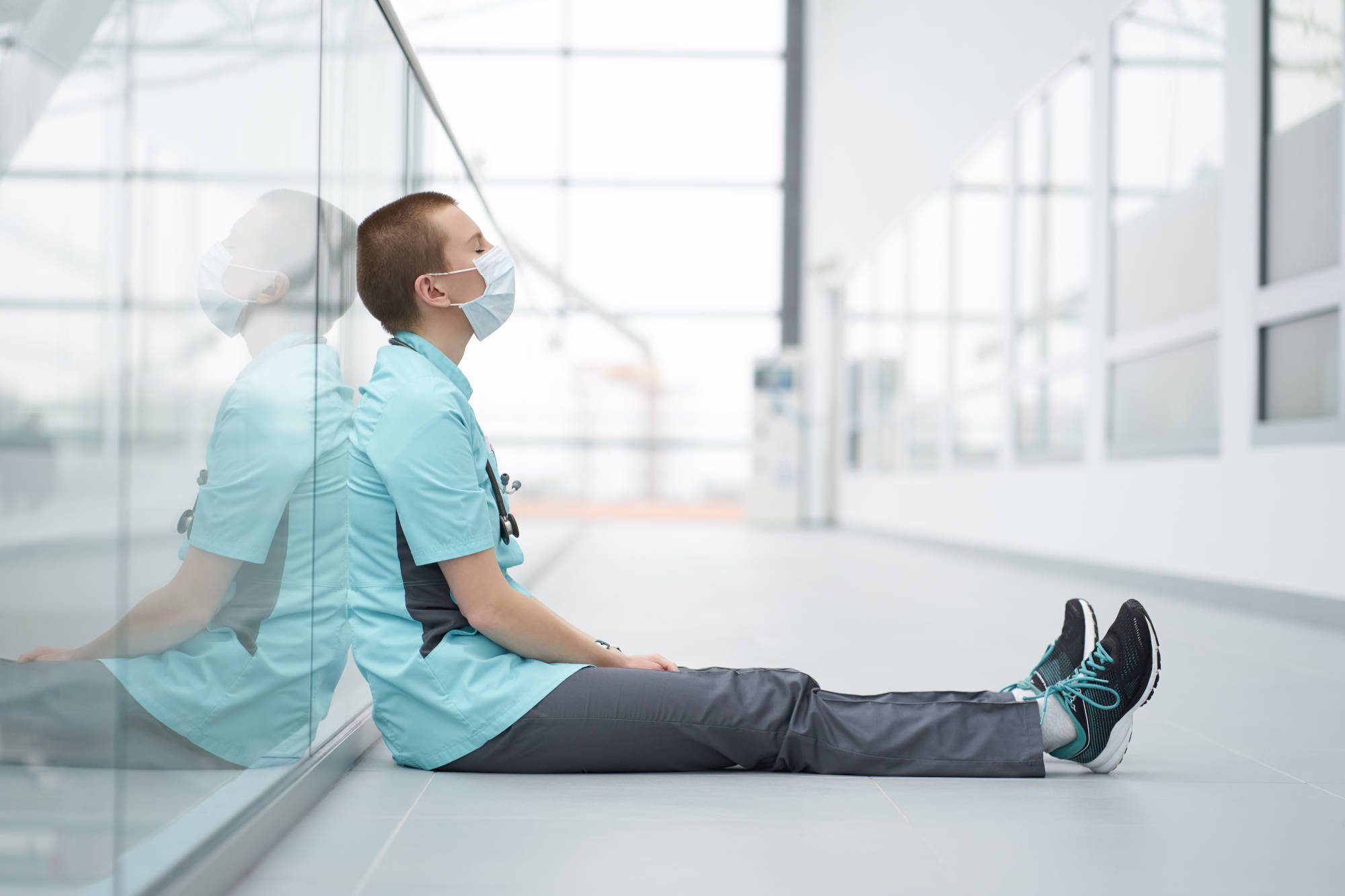Burnout, a psychological syndrome characterized by “emotional exhaustion, depersonalization, and a sense of reduced accomplishment in day-to-day work,” is a very common ailment for physicians practicing in the United States and globally [i]. In fact, one study showed that 45.8 percent of over 7,000 U.S. physicians experienced burnout at some point during their careers [ii]. Physician burnout is the result of a highly stressful, challenging, and time-consuming career—issues which have now been exacerbated by the COVID-19 pandemic. Given that burnout has been associated with an increase in drug and alcohol abuse, physical exhaustion, dissatisfaction, and marital/familial issues for physicians, as well as decreased quality of patient care [i], it is of utmost importance to examine the impact of COVID-19 on burnout rates and identify possible solutions [v].
Despite the relatively recent inception of the COVID-19 pandemic, research has already established its substantial impact on physician burnout rates. Burnout can be quantified using the Maslach Burnout Inventory (MBI), which assesses three specific criteria of burnout: emotional exhaustion, depersonalization, and reductions in personal accomplishment [i]. One recent study by Wu et al. demonstrated that a significantly greater number of physicians demonstrated burnout on the MBI scale after COVID-19 compared to before the pandemic [iii]. Moreover, Sansongahar et al. reported a significant increase in occupational hazards that have been previously associated with burnout, including longer shifts, limited resources, and sleep deprivation [iv]. Other factors that increase the risk of burnout due to COVID-19 are working in a department with heightened risk/demand, being a female physician, and working longer hours.
Though it remains uncertain as to when the COVID-19 pandemic will finally meet its end, studies have shown that actions can be taken in the meantime to alleviate the increase in burnout. For example, a study conducted by Amanullah et al. demonstrated that mindfulness exercises attenuated burnout rates, with physicians reporting an improved sense of control in difficult situations [vi]. Limiting shifts to less than 16 hours has also been shown to improve morale and burnout rates, although this may be difficult in understaffed healthcare facilities [vii]. Finally, one of the most valuable defenses against burnout— and notably, the most time- and money-efficient— is feeling supported by others both in and out of the workplace [viii]. Therefore, healthcare administrations should focus on implementing community-building tactics, as well as other strategies when possible, in order to protect both their physicians and patients.
References
i. Maslach, C.; Jackson, S.E.; Leiter, M.P. Maslach Burnout Inventory Manual, 3rd ed.; Consulting Psychologists Press: Palo Alto, CA, USA, 1996.
ii. Shanafelt, T.; Boone, S.; Tan, L.; Dyrbye, L.; Sotile, W.; Satele, D.; West, C.; Sloan, J.; Oreskovich, M. Burnout and Satisfaction with Work-Life Balance Among US Physicians Relative to The General US Population. Arch. Intern. Med. 2012, 172, 1377.
iii. Wu, Y.; Wang, J.; Luo, C.; Hu, S.; Lin, X.; Anderson, A.; Bruera, E.; Yang, X.; Wei, S.; Qian, Y. A Comparison of Burnout Frequency Among Oncology Physicians and Nurses Working on The Frontline and Usual Wards During The COVID-19 Epidemic in Wuhan, China. J. Pain Symptom Manag. 2020, 60, e60–e65.
iv. Sasangohar, F.; Jones, S.; Masud, F.; Vahidy, F.; Kash, B. Provider Burnout and Fatigue During The COVID-19 Pandemic: Lessons Learned from A High-Volume Intensive Care Unit. Anesth. Analg. 2020, 131, 106–111. DOI: 10.1213/ANE.0000000000004866
v. Kannampallil, T.; Goss, C.; Evanoff, B.; Strickland, J.; McAlister, R.; Duncan, J. Exposure To COVID-19 Patients Increases Physician Trainee Stress and Burnout. PLoS ONE 2020, 15, e0237301.
vi. Amanullah, S.; McNally, K.; Zelin, J.; Cole, J.; Cernovsky, Z. Are Burnout Prevention Programs for Hospital Physicians needed? Asian J. Psychiatry 2017, 26, 66–69.
vii. Weaver, M.D.; Landrigan, C.P.; Sullivan, J.P. The association between resident physician work-hour regulations and physician safety and health. Am. J. Med. 2020, 133, e343–e354.
viii. McMurray, J.; Linzer, M.; Konrad, T.; Douglas, J.; Shugerman, R.; Nelson, K. The Work Lives of Women Physicians. J. Gen. Intern. Med. 2000, 15, 372–380.
